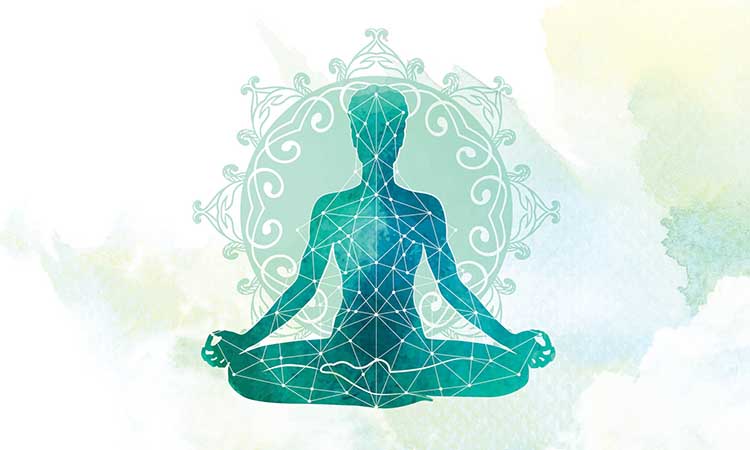तत्र प्रत्ययैक तानता ध्यानम् ॥ २॥ (योगसूत्र 3/2)
“tatra pratyayaikatanata dhyanam”
Dhyana is the uninterrupted and continuous flow of consciousness to the object.
In Yoga Sutras, Dhyana is an advanced state of Dharana. Dharana refers to concentration (and contemplation). Dharana is the state when the mind holds on to an object and when it keeps itself in that state for a while is Dhyana. The object can be either inside the body or outside the body. Dhyana is an unbroken flow of this state for a while without any breaks.
In terms of Patanjali’s Yoga Sutras – Dharana is concentration, which means your whole mind is focused on one thing. Dhyana is a continuous flow of Dharana on one thing. In Dharana, you have only one thing to concentrate on, and all other things are dropped. It stays for a short period. Dhyana is the continuous and uninterrupted flow of consciousness but retaining one object in your consciousness.
When translating Dhyana into English, we have the corresponding word “meditation”. Therefore, meditation is also the state of the uninterrupted and continuous flow of consciousness to the object. I used word consciousness instead of mind for better clarity. Some also define it as “the uninterrupted flow of mind to the object”. It is also correct.
There is also something beyond it when the last object also dropped. Both object and subject disappear. Dualities disappear. Tremendous silence prevails over. It is the state of Samadhi, according to Patanjali Yoga Sutra.
Mindfulness
Another concept of meditation is the state of being mindful of the present moment (also known as mindfulness meditation). It is a deeper understanding and continuous practice of meditation.
The definition of Dhyana still applies here because subject and object are still present. The object in the present is still there.
Whatever you are doing, you do it with full consciousness. When you are eating, you only eat with full consciousness. When you are walking, you only walk with full consciousness.
It does not limit you to one object. It is like a flow of several objects one by one. You just choose the object of the present moment. When it goes deeper, the tremendous silence prevails over, and the state of Samadhi starts.
Choiceless Awareness
There is the third concept of Choiceless Awareness. It means you are resting in awareness without any preferences, judgments, or efforts.
You are simply watching the continuous flow of mind and objects through your consciousness.
In this, Patanjali’s definition of Dhyana still applies because objects are still there that are being watched. You are there who is watching.
Its practice can also lead to Samadhi. In Samadhi, only tremendous silence is left behind. The watching process also disappears. Samadhi means not only mind and objects disappear, but you also disappear. Who will be left for watching?




